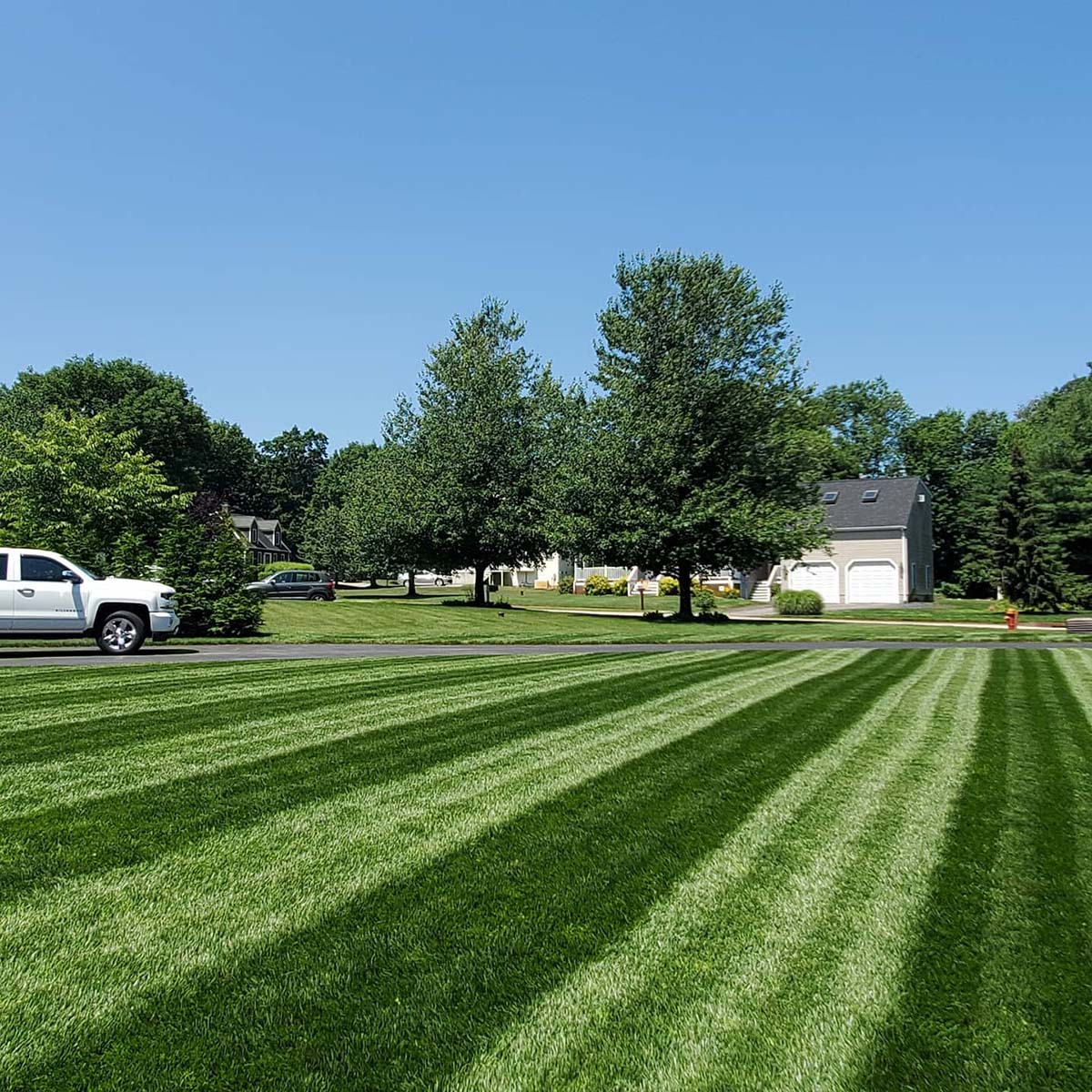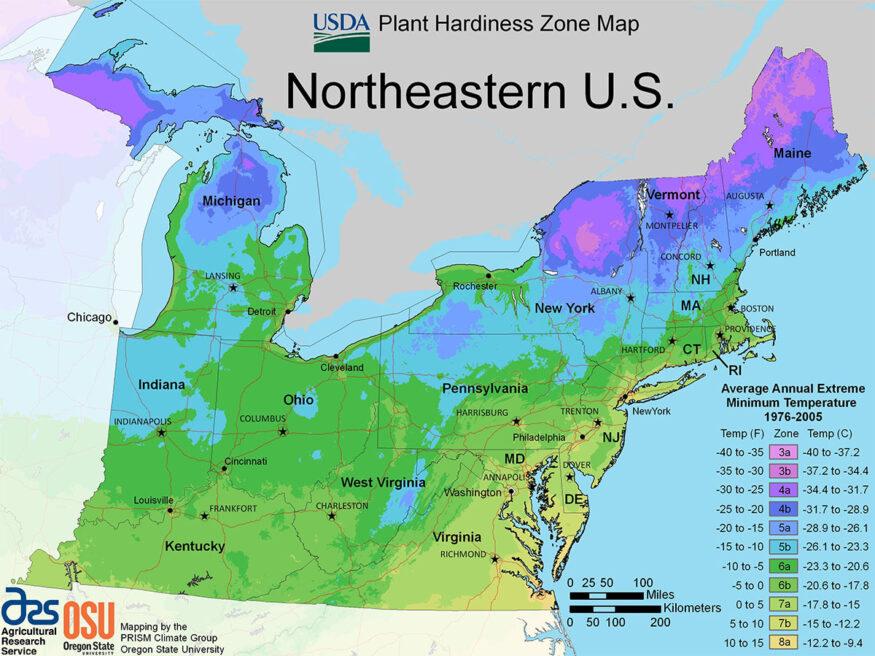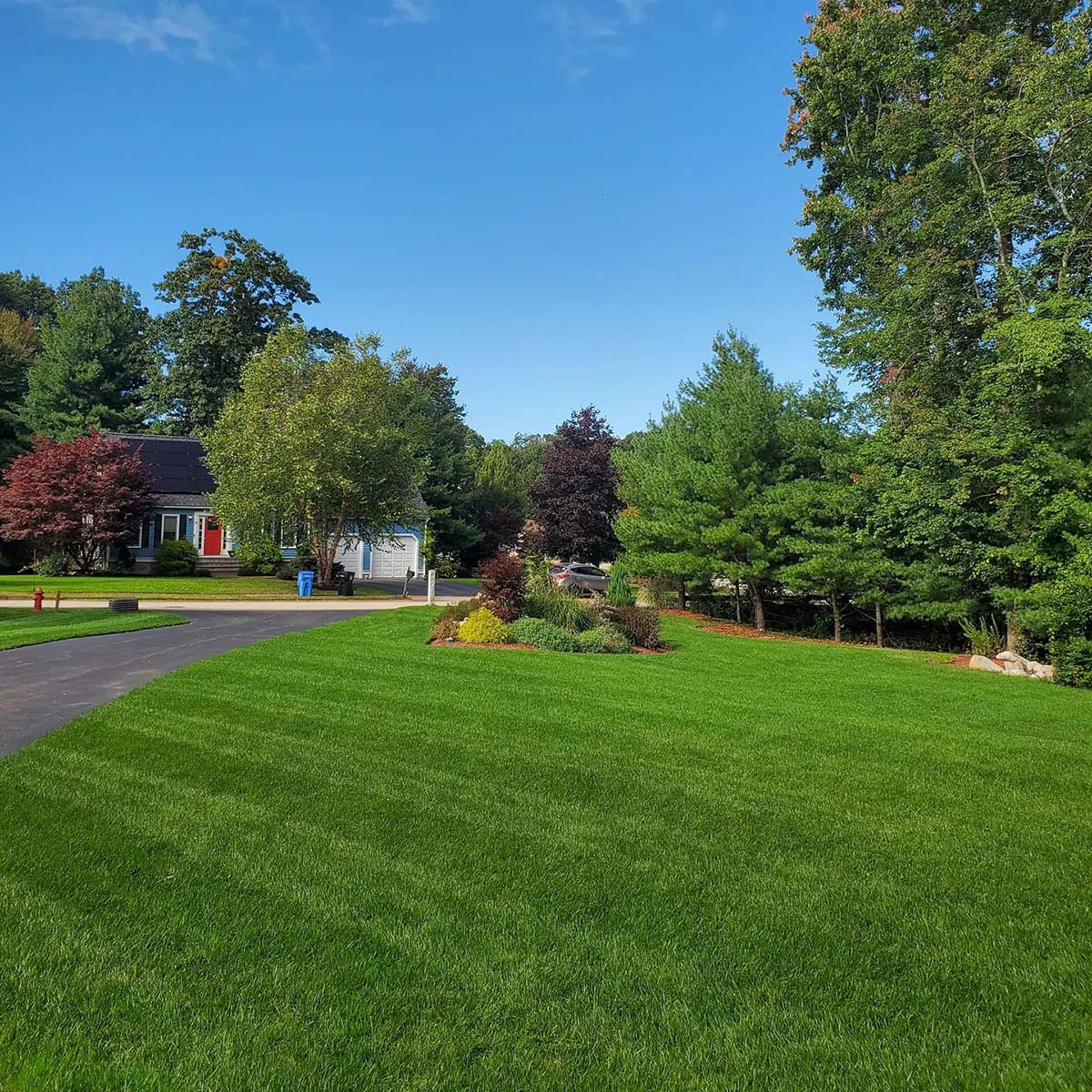Fall is generally the best time to plant grass seed in Massachusetts. During this time, soil temperatures are still warm enough for seed germination, but cooler air temperatures are better for grass growth. This allows the grass to establish itself before going dormant for the winter and building up essential nutrients.
However, it’s important to note that the exact timing of when to plant grass seed can vary depending on the type of grass you choose and your specific location in Massachusetts.
In this article, we go into this answer in a little more detail, drawing on over 7 years of experience in helping readers with lawn care.
Key Takeaways
- Fall is generally the best time to plant grass seed in Massachusetts.
- Choosing the right type of grass and preparing your soil properly are important factors for success.
- Factors such as soil pH, drainage, and sun exposure can all impact the success of your lawn.
Optimal Timing for Planting Grass Seed in Massachusetts

| Grass Type | Ideal Planting Time | Notes |
|---|---|---|
| Cool-Season Grasses | Early Fall (late August to early September) | Includes Kentucky bluegrass, perennial ryegrass, tall fescue, zoysiagrass. Best for cooler temperatures and can tolerate harsh winters. |
| Warm-Season Grasses | Late Spring or Early Summer (after last frost, usually around May 15) | Includes Bermuda grass, St. Augustinegrass, centipede grass, kikuyu grass. Suitable for hot, humid climates and can withstand droughts better than cool-season grasses. |
If you’re planning to plant grass seed in Massachusetts, it’s important to understand the optimal timing for planting.
The best time to plant grass seed in Massachusetts is during the early fall, specifically from late August to early September. This is because the soil temperatures are still warm, which is necessary for optimum seed germination, and cooler air temperatures are better for grass growth.
Spring Vs. Fall Planting
Spring and fall are the two main planting seasons in Massachusetts.
While spring planting is the traditional method, fall planting has several advantages for grass seed germination and establishment.
Fall planting allows for easier germination, better establishment, and larger and more robust plants.
Additionally, planting grass seed in the fall allows the grass to build up essential nutrients before going dormant during the winter.
Understanding Massachusetts Weather and Climate

Massachusetts has a temperate climate with cold, snowy winters and warm, humid summers. These climatic conditions affect grass growth and development. It’s important to consider the timing of planting based on the weather and climate of your specific location in Massachusetts.
For example, if you live in a colder region, you may need to adjust the timing of planting to account for the last frost date.
Role of Soil and Air Temperature
| Temperature Type | Optimal Range | Importance for Grass Growth |
|---|---|---|
| Soil Temperature | 50°F to 65°F (10°C to 18°C) | Warm enough to encourage seed germination. |
| Air Temperature | 60°F to 75°F (15°C to 24°C) | Cool enough to promote grass growth without stressing seedlings. |
Soil and air temperature play a crucial role in the success of grass seed germination and establishment.
Soil temperatures need to be warm enough to encourage seed germination, while air temperatures need to be cool enough to promote grass growth.
The optimal soil temperature for grass seed germination is between 50°F and 65°F, while the optimal daytime temperature for grass growth is between 60°F and 75°F.
Choosing and Preparing for the Right Type of Grass
 Source: the.yahd
Source: the.yahdWhen it comes to planting grass seed in Massachusetts, choosing the right type of grass is crucial for a healthy and beautiful lawn. We have a full guide here on choosing the best grass seed for Massachusetts
There are two main types of grasses: cool-season and warm-season grasses.
Cool-Season Vs. Warm-Season Grasses
Cool-season grasses are the most common types of grasses in Massachusetts. They include varieties such as Kentucky bluegrass, perennial ryegrass, tall fescue, and zoysiagrass. These grasses grow best in cooler temperatures and can tolerate the harsh winters of Massachusetts.
The best time to plant cool-season grass seeds is early fall, specifically from late August to early September (Aug. 15 – Sept. 15). Fall offers several advantages for successful grass seed germination and establishment:
- The soil is still warm from the late summer months, which promotes rapid seed germination and root development.
- The cooler temperatures in the fall create a favorable environment for new grass growth while minimizing stress on the young seedlings.
- Fall brings more consistent rainfall, which helps keep the seedbed adequately moist for optimal germination.
- Reduced weed competition in fall gives newly seeded grass an advantage.
Warm-season grasses, on the other hand, are rare types of grasses that grow well in hot and humid climates. They include varieties such as Bermuda grass, St. Augustinegrass, centipede grass, and kikuyo grass.
The best time to plant warm-season grass seeds is late spring or early summer – after the last frost date (usually around May 15). This is the optimal seed germination time for warm-season grasses.
Once grown, they thrive in hot weather and can withstand droughts better than cool-season grasses. They also have a shorter growing season than cool-season grasses, which means they can establish themselves before winter arrives.
Importance of Soil Preparation
Before planting grass seed, it is important to prepare the soil properly. Soil conditions play a vital role in the success of grass seed germination and establishment. Here are some tips for preparing your soil:
- Remove any rocks, debris, or weeds from the area where you plan to plant grass seed.
- Test your soil to determine the pH level and nutrient content. This will help you choose the right type of grass seed and fertilizer.
- Loosen the soil to a depth of at least six inches to promote root growth.
- Add organic matter, such as compost or peat moss, to improve soil structure and fertility.